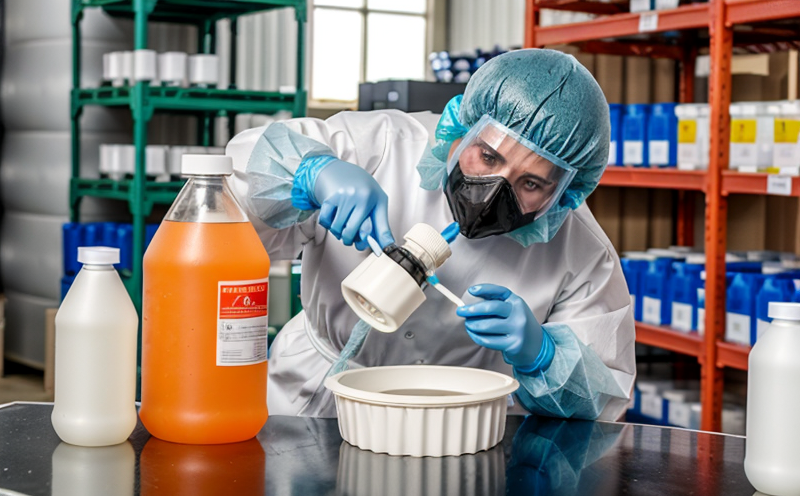ISO 11607 Microbiological Testing of Sterile Barrier Packaging Systems
The ISO 11607 standard is crucial in ensuring that sterile barrier packaging systems are free from microorganisms and other contaminants. This test plays a pivotal role in the healthcare, medical device, pharmaceutical, and food industries to prevent contamination during storage and handling. The testing process involves simulating real-world conditions to assess the integrity of the packaging material against microbiological intrusion.
The ISO 11607 procedure typically involves inoculation with specific microorganisms such as Bacillus atrophaeus spores, which are known for their ability to withstand harsh environmental conditions. The specimen is then incubated under controlled conditions to allow growth and multiplication of the introduced microorganisms. Post-incubation, the packaging integrity is evaluated by examining whether any microorganism has breached the barrier.
This testing ensures that sterile products remain uncontaminated throughout their lifecycle. It is an essential step in validating that the packaging design effectively prevents contamination from external sources such as air or contact with surfaces during manufacturing and storage processes.
The standard also emphasizes the importance of aseptic techniques to prevent cross-contamination between samples and maintains the integrity of the test results. The process must be conducted in an environment that minimizes the risk of introducing contaminants, thus ensuring accurate and reliable testing outcomes.
Understanding the nuances of this standard is vital for quality managers and compliance officers who oversee product safety and reliability. For R&D engineers, it provides critical insights into packaging design optimization. Procurement professionals can ensure they are selecting suppliers that adhere to stringent standards like ISO 11607, ensuring robust quality control.
While the standard is primarily focused on sterile barrier systems, its principles apply broadly across various industries where microbiological safety is paramount. Compliance with this standard not only enhances product safety but also builds consumer trust and confidence in brands that prioritize stringent quality controls.
The testing procedure involves several stages: preparation of the specimen, inoculation, incubation under controlled conditions, and final evaluation. Each step is critical to ensuring accurate results, which can significantly impact the overall reliability and effectiveness of packaging systems.
- Preparation of Specimen: Ensuring that the packaging material is free from any external contamination before testing.
- Inoculation: Introducing specific microorganisms into the packaging to simulate real-world conditions.
- Incubation: Maintaining controlled environmental conditions to allow for growth and multiplication of introduced microorganisms.
- Evaluation: Checking for breaches in the barrier integrity post-incubation.
Benefits
The benefits of ISO 11607 microbiological testing are manifold. It ensures that sterile products remain free from contamination, thereby enhancing patient safety in the healthcare sector and consumer confidence across industries. By adhering to this standard, companies can demonstrate their commitment to quality and regulatory compliance.
This testing also aids in identifying potential weaknesses in packaging design early on, allowing for timely rectification before mass production begins. It helps in maintaining a consistent level of product safety and reliability, which is crucial for brand reputation and market competitiveness.
The results from ISO 11607 testing are widely recognized and accepted by regulatory bodies worldwide, simplifying the process of gaining international approvals. This makes it easier for companies to export their products without additional scrutiny or delays in certification processes.
For sustainability-conscious organizations, this standard promotes responsible packaging practices that minimize waste and ensure efficient use of resources. By identifying and addressing potential breaches early, companies can reduce the environmental impact associated with contaminated products.
Eurolab Advantages
Eurolab offers unparalleled expertise in ISO 11607 microbiological testing. Our team of highly qualified professionals ensures that every test is conducted with precision and adherence to the latest international standards.
We provide comprehensive services, including specimen preparation, inoculation procedures, incubation under controlled conditions, and detailed evaluation reports. Our facilities are equipped with state-of-the-art instrumentation, ensuring accurate and reliable results.
Our proficiency in this standard is further enhanced by our adherence to stringent quality control measures that minimize the risk of contamination during testing. This ensures that our test results are credible and can be trusted for regulatory submissions.
We also offer consultancy services to help clients understand the nuances of ISO 11607 and how it applies to their specific packaging systems. Our team is available to provide expert advice on optimizing packaging design and ensuring compliance with this standard.
Our commitment to quality, combined with our extensive experience in microbiological testing, makes Eurolab a preferred choice for companies seeking reliable and accurate ISO 11607 test results.





